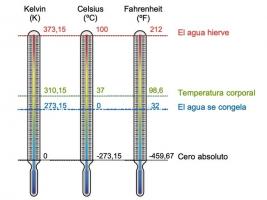Parts of a story: what they are, characteristics and examples
There are three parts that make up a story: the beginning, the middle and the end. All stories usually have a similar structure and each of its parts corresponds to a specific moment in the narrative.
The beginning it is a presentation of the characters and their environment (once upon a time, long ago, in a kingdom, in a forest, there was a princess, there lived a girl).
The knot is the part where the problems of the main characters bring the story to the point of greatest tension (the princess bit the fruit poisoned by the witch, the wolf pretends to be the grandmother to deceive the girl).
The outcome solves these problems, thanks to a person or a wonderful event (the princess wakes up after receiving a kiss of true love, the hunter frees the grandmother and the girl from the belly of the Wolf).
The story is a literary genre that briefly narrates facts of a fabulous nature. Its argument is simple and its transmission can be done orally or in writing.
The elements involved in this genre are time, space, action, characters and the narrator. The purpose of a story is to entertain and provide readers with a lesson or moral,
Next we will see in more detail each of the parts that make up a story.
Start
The beginning is the first part of the story and can receive other names such as beginning, exposition, introduction or approach.
In it, a description of the environment and the main characters is made, a temporal and spatial context is drawn.
The plot is framed within a pleasant and calm atmosphere, a moment that precedes the conflict of the action.
From the first sentence, the story tries to capture the reader's attention, suggesting the events that are to come to keep his interest awake.
Introduction Example
Once upon a time there was a beautiful town called Hamelin, known throughout the kingdom for its bountiful crops and herds. All its inhabitants lived happily, without want and worries.
One day hundreds of mice came to the town and sneaked into the pantries of the houses and the barns. The neighbors came to the aid of the governor, fearing that the plague would destroy their provisions and leave them with nothing.
The governor promised a succulent reward to whoever managed to keep the mice away from the lands of Hamelin.
The same day a stranger appeared who promised to end the plague, only with the help of a flute.
He began to play and the mice, to the sound of the melody, left their hiding places to go to meet the flutist, and followed his footsteps until he left the town.
Knot
The second part, also known as medium, development or conflict, brings us closer to the moment in history in which a less peaceful atmosphere is created.
The antagonists, enemies or villains make their appearance, that is, the characters who have to generate the conflict and confront the protagonists.
In the knot, the protagonist's purposes are presented to end the problem and the obstacles that hinder his work.
The main character must play the hero/heroine role to reach the solution and lead the story to a favorable outcome.
knot example
Freed from the plague, the town of Hamelin was shining again, the streets were filled with children, laughter and games, and the villagers prepared banquets and parties to celebrate it.
The flutist returned to the town to collect the reward from him, but the governor refused to pay because he considered that the musician's effort was not worth the sum of money that he had promised.
All the inhabitants of Hamelin despised the Pied Piper's favour.
The flutist, annoyed at the lack of consideration he had received, began to play a melody even more beautiful than the one used to expel the mice.
Hearing the melody, the children began to follow the Pied Piper, who was trying to lead them away from Hamelin, under the spell of his music.
Suddenly, someone realized what was happening and started shouting that the flutist was taking the children.
Outcome
The outcome is the last part of the story, it is also called the end or conclusion.
This part explains how the main character solves the conflict, overcoming himself, an adversity of fate or his enemies.
The situation is resolved by meeting the expectations of the reader, although the ending does not have to be as expected.
When it comes to children's stories, the endings are usually happy, but there are other types of stories that can have a tragic ending. In some stories this ending provides a moral lesson.
outcome example
The governor understood that his attitude and his greed had caused this situation, and he went out with his neighbors in search of the children.
They had spent hours searching when they found the Pied Piper, apologized to him and, after paying him the reward, begged him to return his beloved children.
The flutist played his melody again and the children began to come out of the forest to rejoin their families.
The people of Hamelin learned that they should not be greedy. The piper continued on his way in search of people he could help.
References:
- Grimm, W., Grimm, J., (2016). Hamelin's futist. Santillana Loqueleo.
- Imbert, E. TO. (1979). Theory and technique of the tale. Marymar Editions.
- Urban, N. m. (2011). The story as an educational instrument.
Also read:
- story and novel
- character types
- Types of texts

